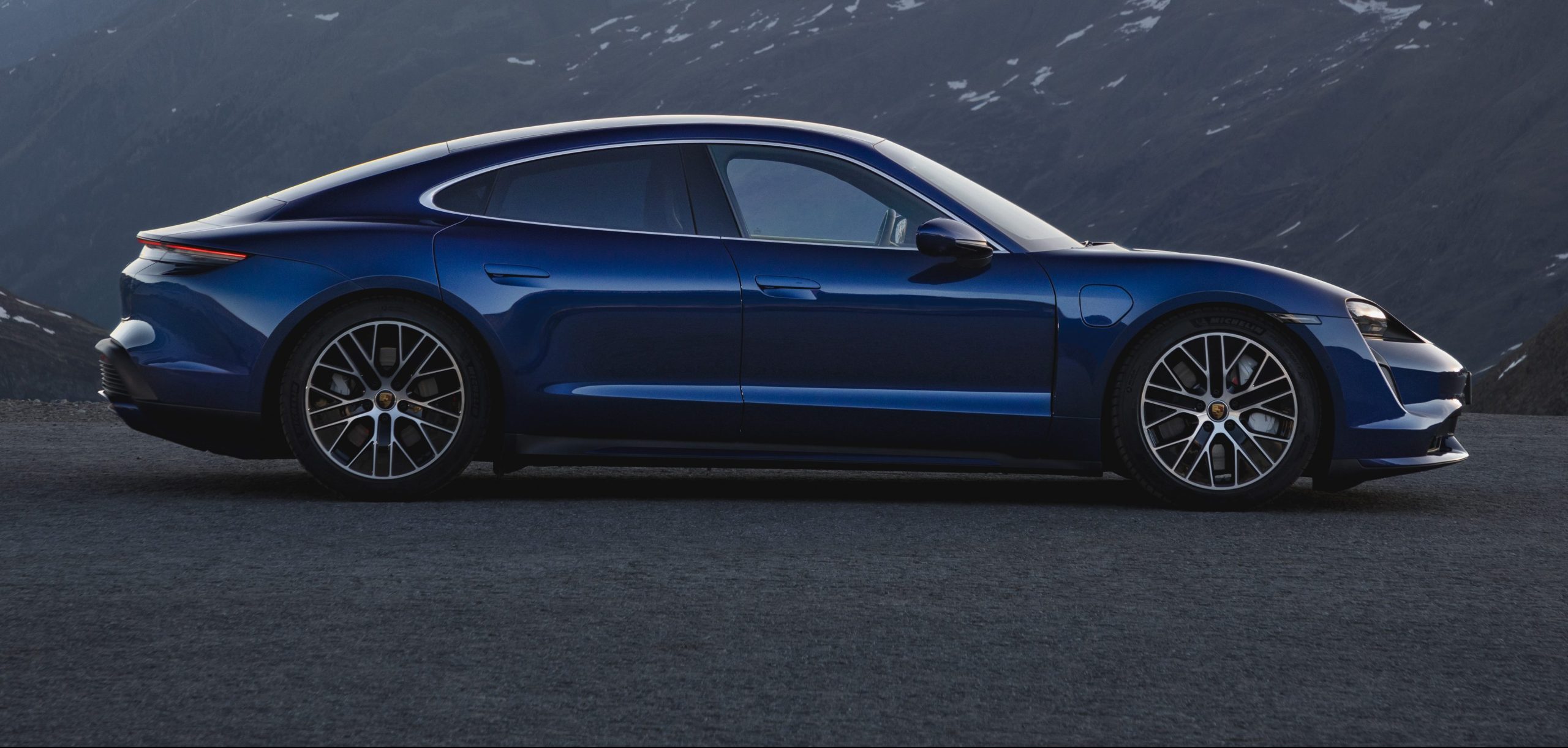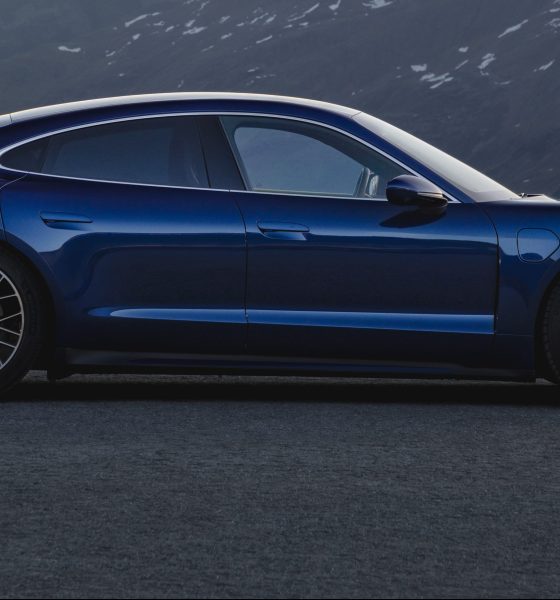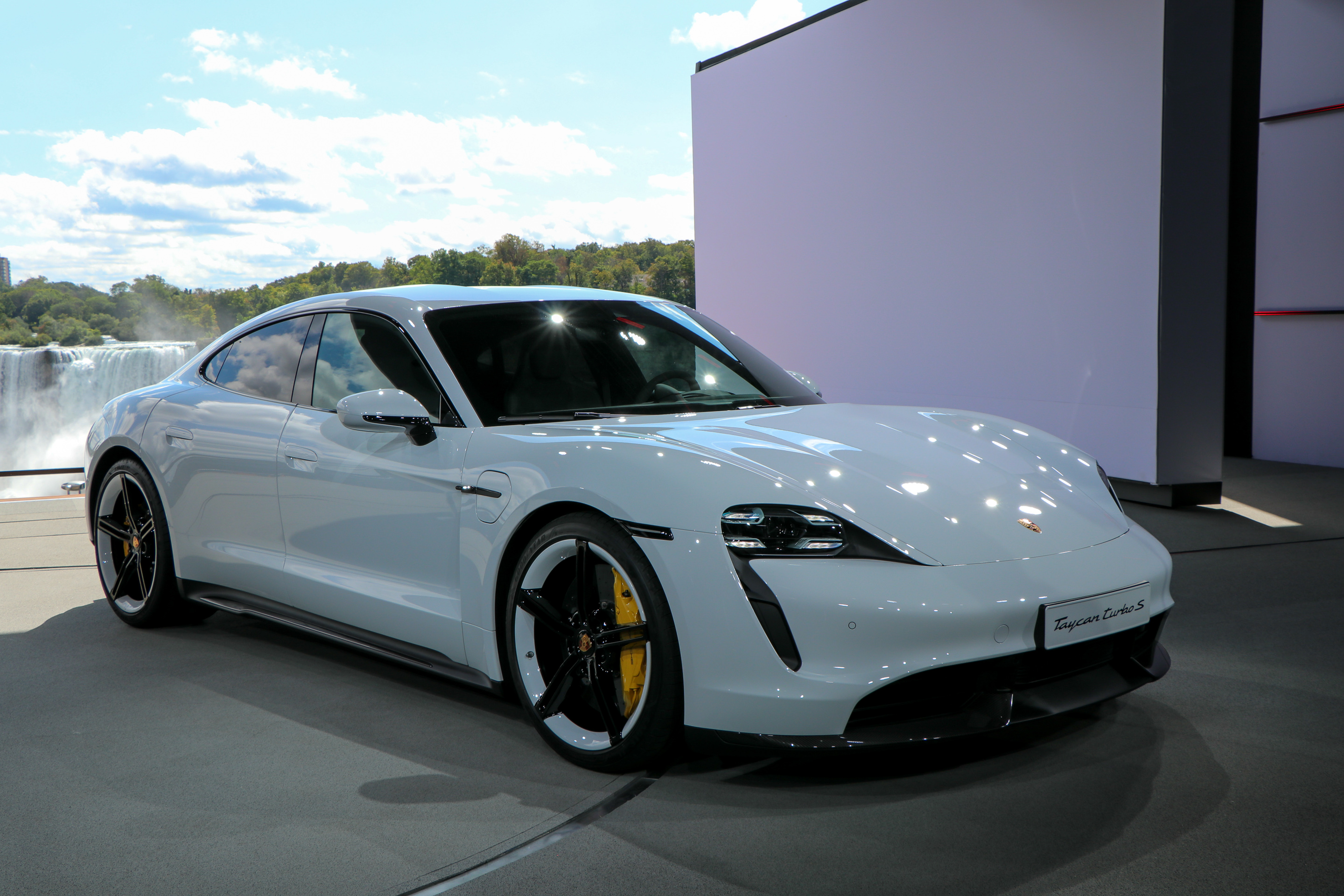

Lifestyle
The Tesla and the Porsche: How much does EV driveability matter?
Welcome to a FREE preview of our weekly exclusive! Each week our team goes ‘Beyond the News’ and handcrafts a special edition that includes our thoughts on the biggest stories, why it matters, and how it could impact the future.
You can receive this newsletter along with all of our other members-exclusive newsletters, become a premium member for just $3/month. Your support goes a long way for us behind the scenes! Thank you.
—
After reading some of the Porsche Taycan reviews that came out yesterday, I suddenly recalled a “conversation” I’d had with someone on Twitter a few years back about self-driving technology. Now, this was a bit before the site became quite the current-day cesspool, and I wasn’t yet accustomed to strangers yelling at me when they disagreed with something I’d said, so it stood out at the time.
If memory serves me well, I’d tweet-commented some sarcasm about how dangerous driving was to begin with in response to Autopilot criticism making the rounds, and this person replied with ALL CAPS about how the whole thing was wrong-headed because lots of people actually enjoy driving. Specifically, they said that enjoyment was part of what makes us human, and it was even hashtagged.
#whatmakesushuman
I politely replied that I’d been in too many accidents as a passenger and victim to not welcome the advent of self-driving with open arms. What does the new Taycan have to do with this, you ask? I promise to connect the dots, but bear with me a bit longer…
After that little flashback, I had another thought related to some personal plans of mine. One of the pieces of land my husband and I considered building our future home on had dozens of acres, so we dreamt for a moment about having a hobby garage for EV conversion projects with small test tracks and the like alongside chickens and tomatoes. Shortly after, though, it really became clear to me that the future of auto wasn’t just electric. Its drivers will have motherboards instead of flesh and blood.
I still don’t really know what to think about all that. I mean, I love microcontrollers and have a collection of stuff I’d like to solder together and write scripts for, but tinkering with neural networks is a few more calculus classes away for me to even meet the pre-reqs of learning anything useful to implement in a hobby garage. (And so forth.) Of course, my husband is all for anything that involves cars, even just legacy ICE models, but my interest was directly tied to Elon Musk & Company, and they’re pretty set on self-driving. I just couldn’t see myself retrofitting a 1959 Cadillac Eldorado with Tesla-type tech for an AI-powered vintage chauffeur. I suppose an electric tractor might be a worthy endeavor, but I digress.
Musk has said a few times now that buying anything other than a Tesla is like buying a horse and buggy, not because of their 0-60 mph times, Track Mode, or amazing safety ratings. Other brands are behind because of Tesla’s Full Self-Driving progress.
So, let’s circle this discussion back around to the Taycan.

Over at The Drive, Alex Roy had some harsh words for anyone comparing Porsche’s new EV to anything Tesla: If you’re comparing the brands, you’ve missed the point. The Taycan isn’t about winning a drag race or waving around one’s testosterone (or heightened estrogen) from stoplight to stoplight. It’s about driving. Period.
“The specs almost don’t matter. It’s designed to be driven,” Roy argues. “The Taycan is for people who want to drive, and continue doing so. That’s why Porsche exists as a company. If you don’t understand that, no Porsche ever made was made for you, and the company might as well not exist.”
The Taycan’s lack of a Tesla-style Autopilot is almost a feature, he essentially says. The car driving you would take away from your experience driving the car. My Twitter troll wasn’t as elegant as Roy in making a similar point, but I suppose not every messenger has a talent for communication.
These dueling concepts have left me a bit…distraught(?)…about where to put my enthusiasm. Do I root for better EV designs or better self-driving software? Will the car matter in the end when your attention is either on the scenery or on cabin entertainment? Personally, I like newer-looking taxis, but I can’t say I’ve ever hailed one with any thought about its particular make and model. I imagine my personal self-driving vehicle purchasing decision would be similarly practical. In such a world, some basics like comfort and a smooth ride will be valued, but the experience will no longer factor in the driver or driver-initiated capabilities.
This probably seems like a silly thing to get caught up in when Level 4 and 5 autonomy still feel like eons away, but I’m also the kind of person that gets bummed about rockets being “old” and “inefficient” for long-distance space travel. Where’s my warp drive already??
(I will note that I don’t like Star Trek episodes with too much plot over tech showcases. I’m also told I’m great fun at parties. Not sure if the two are related.)
So, while the Porsche Taycan looks like it’s going to make Porsche-type people happy, is it just the latest display of legacy auto still not “getting” where EVs are headed? Or, perhaps there will always be a “manual” lane on highways and some streets in the future for those wanting to live dangerously?
This issue might not mean much for decades to come yet, but when my grandkids are looking for something to ferry me to doctor appointments, I can honestly tell them I’ve been thinking about what I want for a very long time. Perhaps I may even have made up my mind by then.

Lifestyle
Tesla Model S Plaid battles China’s 1500 hp monster Nurburgring monster, with surprising results
There is just something about Tesla’s tuning and refinement that makes raw specs seem not as game-changing.

The Tesla Model S Plaid has been around for some time. Today, it is no longer the world’s quickest four-door electric sedan, nor is it the most powerful. As per a recent video from motoring YouTube channel Carwow, however, it seems like the Model S Plaid is still more than a match for some of its newer and more powerful rivals.
The monster from China
The Xiaomi SU7 Ultra is nothing short of a monster. Just like the Model S Plaid, it features three motors. It also has 1,548 hp and 1,770 Nm of torque. It’s All Wheel Drive and weighs a hefty 2,360 kg. The vehicle, which costs just about the equivalent of £55,000, has been recorded setting an insane 7:04.957 at the Nurburgring, surpassing the previous record held by the Porsche Taycan Turbo GT.
For all intents and purposes, the Model S Plaid looked outgunned in Carwow’s test. The Model S Plaid is no slouch with its three motors that produce 1,020 hp and 1,420 Nm of torque. It’s also a bit lighter at 2,190 kg despite its larger size. However, as the Carwow host pointed out, the Model S Plaid holds a 7:25.231 record in the Nurburgring. Compared to the Xiaomi SU7 Ultra’s record, the Model S Plaid’s lap time is notably slower.
Real-world tests
As could be seen in Carwow’s drag races, however, Tesla’s tech wizardry with the Model S Plaid is still hard to beat. The two vehicles competed in nine races, and the older Model S Plaid actually beat its newer, more powerful counterpart from China several times. At one point in the race, the Xiaomi SU7 Ultra hit its power limit due to its battery’s temperature, but the Model S Plaid was still going strong.
The Model S Plaid was first teased five years ago, in September 2020 during Tesla’s Battery Day. Since then, cars like the Lucid Air Sapphire and the Xiaomi SU7 Ultra have been released, surpassing its specs. But just like the Model Y ended up being the better all-rounder compared to the BYD Sealion 7 and the MG IM6, there is just something about Tesla’s tuning and refinement that makes raw specs seem not as game-changing.
Check out Carwow’s Model S Plaid vs Xiaomi SU7 drag race video below.
Lifestyle
500-mile test proves why Tesla Model Y still humiliates rivals in Europe
On paper, the BYD Sealion 7 and MG IM6 promised standout capabilities against the Model Y.

BYD is seeing a lot of momentum in Europe, so much so that mainstream media has taken every opportunity to argue that the Chinese automaker has beaten Tesla in the region. But while BYD sales this year in Europe are rising and Tesla’s registrations remain challenged, the raw capabilities of vehicles like the Model Y are difficult to deny.
This was highlighted in a 500-mile challenge by What Car? magazine, which showed that the new Tesla Model Y is more efficient, cheaper to run, and more reliable than rivals like the BYD Sealion 7, and even the nearly 400 KW-charging MG IM6.
Range and charging promises
On paper, the BYD Sealion 7 and MG IM6 promised standout capabilities against the Model Y. The Sealion 7 had more estimated range and the IM6 promised significantly faster charging. When faced with real-world conditions, however, it was still the Model Y that proved superior.
During the 500-mile test, the BYD nearly failed to reach a charging stop, arriving with less range than its display projected, as noted in a CarUp report. MG fared better, but its charging speeds never reached its promised nearly-400 kW charging speed. Tesla’s Model Y, by comparison, managed energy calculations precisely and arrived at each stop without issue.
Tesla leads in areas that matter
Charging times from 25% to 80% showed that the MG was the fastest at 17 minutes, while Tesla and BYD were close at 28 and 29 minutes, respectively. Overall efficiency and cost told a different story, however. The Model Y consumed 19.4 kWh per 100 km, compared to 22.2 for MG and 23.9 for BYD. Over the full trip, Tesla’s charging costs totaled just £82 thanks to its supercharger network, far below BYD’s £130 and MG’s £119.
What Car? Magazine’s testers concluded that despite BYD’s rapid sales growth and the MG IM6’s seriously impressive charging speeds, Tesla remains the more compelling real-world choice. The Model Y just offers stability, efficiency, and a proven charging infrastructure through its Supercharging network. And as per the magazine’s hosts, the Model Y is even the cheapest car to own among the three that were tested.
Watch What Car? Magazine’s 500-mile test in the video below.
Lifestyle
Tesla Cybertruck slapped with world’s least intimidating ticket, and it’s pure cringe
One cannot help but cringe and feel second-hand embarrassment at the idea of a person just driving around with a stack of these babies.

A Cybertruck parked at Stanford Shopping Center in California was recently hit with what might be the most try-hard piece of paper ever slipped under a wiper blade: a “fake citation” accusing the driver of supporting a “fascist car.”
The note, shared on X by Tesla staff program manager Ryan Torres, quickly made the rounds on X, where it quickly gained attention as an example of how not to protest.
The world’s least intimidating ticket
According to the citation, the supposed “violation” was “driving a fascist car.” The remedial action? Take the bus, call an Uber, or ride a bike. The note also dubbed Elon Musk a “chainsaw-wielding Nazi billionaire.” Now, protests against Tesla and Elon Musk have become commonplace this year, but one cannot help but cringe and feel second-hand embarrassment at the idea of a person just driving around with a stack of fake anti-Tesla/Musk citations.
Torres pointed out the irony himself in his post on X. Tesla currently employs over 140,000 Americans, and SpaceX has put the U.S. firmly back at the top of space technology. As Torres put it, maybe the person behind the world’s least intimidating ticket should “read a book on innovation before vandalizing” other people’s property.
Peak performative clownery
Not to mention that the fake ticket’s logic collapses under its own weight. EVs like the Cybertruck are literally designed to reduce emissions, not “destroy the economy.” If anything, Tesla has bolstered the United States’ economy by fueling jobs in engineering, manufacturing, and clean energy. It’s not the first time a Tesla has been the target of vandalism or politically charged notes, but this one stands out for sheer cringe value.
Torres summed it up neatly: “Peak clownery.” On that point, at least, the citation earns full marks. In a way, though, perhaps cringe fake tickets are not as bad as the literal firebombs that were being thrown at Tesla stores and cars earlier this year because some critics were gleefully misinformed about Elon Musk.








